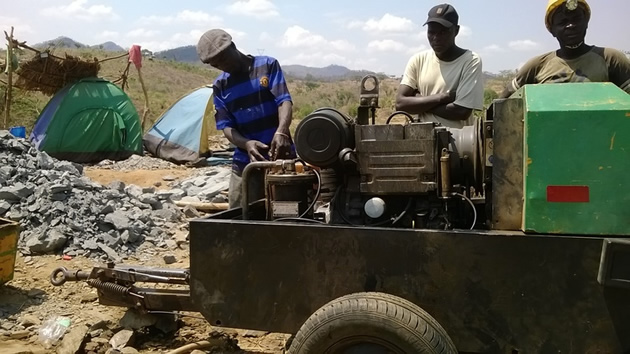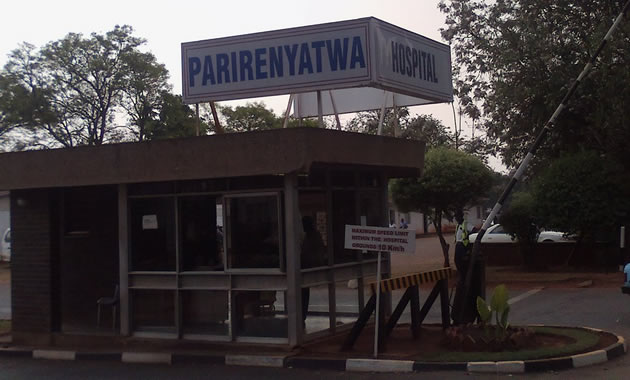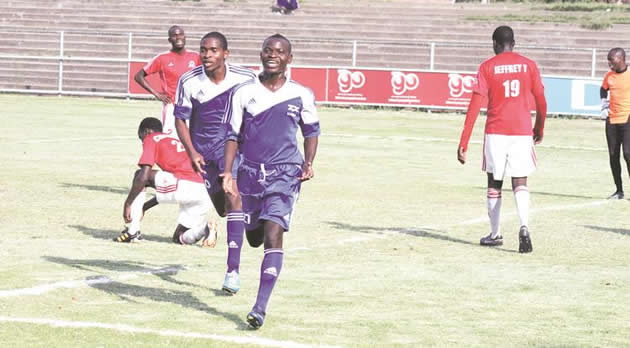Muscle not enough for artisanal miners

Tichaona Zindoga Senior Features Writer
Some of the most striking attributes of small-scale and artisanal miners are that they rely on the strength of the hands and mental grit to take them down the dark bowels of the earth and still hope to come back home alive with something to feed themselves and their families.
Which they do, largely.
Yet beyond the physical strength, usually replenished by binges of food and drink after striking gold, the need for equipment and capital remains glaring.
For miners in the Mukaradzi area of Mt Darwin South, in Mashonaland Central Province, lack of equipment among artisanal miners is proving costly as the equipment needed for everyday undertakings such as electricity generators, water pumps and compressors are hired out by “sponsors” at a taxing rate.
Besides, such equipment rotates around and among different groups while the same equipment, some of it very old, ends up breaking down, some for days on end.
Mukaradzi is a typical hive of activity.
Located some 30 kilometres south east of Mt Darwin, it is an area that is caught in craggy, gold-rich hills that have been the attraction of locals and visiting fortune hunters.
And enterprising men and women have camped here too, to sell various consumables, including sex.
Most of the miners here work on claims owned by individuals with whom a formula for sharing proceeds has been agreed.
The situation is that there is the claim holder, a lead miner, a sponsor and the workers.
Upon delivery to the mill, each of these four gets a quarter of proceeds.
A man from Rushinga, Forcious Charamba, explained to The Herald that it would be better if the workers were able to get their own equipment.
“I have been working here for about five years now and the average we get monthly is $100. This is because we have to share among all parties. It is not a bad arrangement but I think we would be better off with our own equipment,” he said.
He said mining presented an opportunity for employment and personal development and all that was needed was for artisanal miners to be equipped.
The energy and resolve is there and so is the experience and knowledge.
They even want more – that is claims for themselves.
“We want to develop. We have the knowledge of surveying and prospecting but what is lacking now is equipment and capital,” said Charamba.
Oscar Ranjisi from Centenary came here in May.
He is part of a group of six people mining at one spot here and he says they expect $3 000 per 10 tonnes of ore sent to the mill.
But this figure is subject to the same sums as outlined above.
His only hope was for the lifting of constraints in equipment so that the operation becomes more efficient.
He pointed out that the irregular availability, and the cost of explosives was also a hindrance to their work.
“If we cannot raise the $270 per box required for the explosives, or if they are not available it means we have to stop because the rock is too hard to be worked on by bare hands,” said Ranjisi.
Charles Matambanadzo, who has been slaving in commercial mines in Ngezi and Midlands, knows his position as an employer is a vast improvement.
He came here last November.
However, the lack of equipment is hampering his dreams to go commercial one day – and be able to say produce 10kg of gold, as he hypothesises (and that will be all mine, he says, rather than working for somebody.)
“We have to rely on these so-called sponsors and their goodwill. Even this equipment we share among teams can cause delays,” said Matambanadzo.
“We looked forward to owning our own equipment, our own places and employing others and we will be approaching the relevant offices for assistance,” he said.
Paradigm shift
There have been calls for a serious approach towards equipping and mechanizing the small scale mining sector.
In July Zimbabwe Miners Federation president Trynos Nkomo said the mechanization that had taken place in agriculture should be replicated in mining.
“We need an approach like the land reform where farmers were given tractors with no history of farming,” Nkomo told a local paper.
Gold Miners Association of Zimbabwe Vice President Akim “Greens” Tom told The Herald this week that equipping artisanal miners would not only empower them but also have a positive impact on the economy.
He said: “If the miners are equipped they will increase production and more gold will flow to Fidelity (Printers, the Government agency that buys gold). We have had discussions with authorities so that this may be looked into,” he said.
He revealed that there was some equipment to be available to claim holders, which would be disbursed soon.
On the other hand, there is need for organisation and education among artisanal miners.
“Some of them run away when they see Government officials because they think they are doing something illegal. There is need for education and some of them need to be trained in blasting and get certificates because it is a requirement,” he said.
Government has warmed up to small scale miners — and it began two years ago with then Minister of Mines Obert Mpofu.
He “banned” the derogatory use of the word “makorokoza”.
“We can’t punish those who are
trying to earn an honest living. So in our ministry the word is banned,” an official in the ministry explained in 2012.
The Zim Asset policy document recognises the role of small scale miners and seeks, among other things, “establishing indigenous mining syndicates, consortia, SMEs and co-operatives, hence resonating well with the Government’s thrust of indigenisation, empowerment and employment creation.”
Statistics say at least 10 percent of Zimbabwe’s total gold output annually comes from small scale and artisanal miners.
The numbers
The numbers of the small scale and artisanal miners in the country are hard to come by due to the fluidity of the miners and lack of formality in their activities.
However, it has been estimated that Zimbabwe has close to 500 000 miners, 25 000 of which whom registered.
The president of the Zimbabwe Artisanal and Small-Scale for Sustainable Mining Council Wellington Takavarasha told a Parliamentary committee last month that: “About 70 percent to 85 percent of the rural population are into artisanal mining.
“Of these 70 percent are into gold mining, 30 percent into chromite, tantalite and mining of other semi-and precious minerals.”
And a local daily newspaper quoted him chronicling further numbers – and this time the prohibitive figures that are ranged against miners.
These included high levies charged by the Ministry of Mines and Mining Development that included pegging fees of $4 000, milling fees of $8 000 and mine registration fees of $1 000 per annum.
“The biggest challenge experienced by small-scale miners is that the Mines and Minerals Act was written in 1963 and it did not include artisanal small-scale miners.
“Levies charged by rural district councils are also too high and range from $200 to $1 000, while charges for environmental impact assessments range from $500 to $1 000. These miners have also been severely affected by the ban on chrome exports,” he was quoted as saying.








Comments